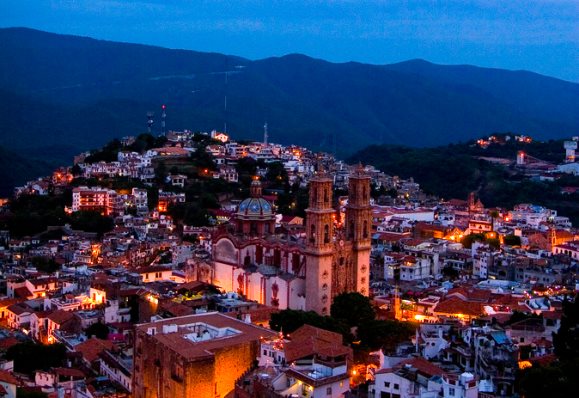Silver working in Mexico
The center of Mexico’s silver craftsmen and silver making industry is the city of Taxco, in the state of Guerrero. Several pre-colonial groups had developed the technical skills needed to fashion elaborate and complex silver items, especially jewelry, but knowledge of these techniques had largely died out by the start of the 20th century. Somewhat surprisingly, the silver-making industry was reignited in Taxco by an American, William Spratling.
Spratling (1900-1967) was an American-born silversmith and artist, best remembered today for having reinvigorated 20th century Mexican silver design. Spratling started a small silver industry in the picturesque town of Taxco in the state of Guerrero in 1931, with the intention of benefiting local people. Taxco was one of the earliest silver-mining areas exploited during colonial times. Local silver mines were still important in Spratling’s day, but have since closed, with silver brought in to Taxco from elsewhere in Mexico.
William Spratling’s designes were based on pre-colonial motifs and he trained local craftsmen to produce them in his workshop Taller de las Delicias. He gained a reputation for fine designs and excellent workmanship. Many of his apprentices went on to found their own silver workshops. Silver working became very popular in Taxco and the town gradually transformed itself into Mexico’s premier showcase for high quality silver work of all kinds, from jewelry to tableware. Over the years, the town attracted shoppers and has also become a very important tourist destination.
Sometimes called the “Father of Mexican Silver”, Spratling not only sold silver locally in Taxco, but also supplied silver items to stores such as Neiman Marcus and Saks Fifth Avenue in New York and elsewhere. Some of his earliest work was inspired by stonework reliefs in nearby archaeological sites such as Xochicalco. The William Spratling Museum near Taxco’s main plaza showcases his personal collection of archeological pieces as well as his original silver-work designs and workshops.
Silver-working exists in many other Mexican towns and cities, but Taxco is the premier place in Mexico for tourists interested in seeing or purchasing fine silver. The town celebrates the National Silver Fair (Feria Nacional de La Plata) in late November each year. The 76th annual Silver Fair runs from Saturday 30 November to Saturday, 7 December 2013.
Many of Spratling’s original designs are still being made today. For example, Spratling Renaissance (which sells silver from Taxco via its online store) proudly proclaims that, “The legacy of William Spratling is the powerful motivator of a collaboration between the last of the generation of Taxco master silversmiths and the rural women artisans of Tecalpulco, a village in the Municipio of Taxco de Alarcón, Guerrero. The jewelry employs old-fashioned jewelry-making arts to fashion ornamental esthetic objects worthy of a museum. Every piece coming from this shop is a perfect reproduction of the unique original masterworks of William Spratling.”
Of several books about Spratling, Sandraline Cederwall’s Spratling Silver stands out. Cederwall is a pre-eminent collectector-dealer of Spratling silver. The latest edition of this work includes an expanded text, many new photographs, and a biographical essay by Barnaby Conrad, a friend and contemporary of the noted silver designer. The book features dramatic black-and-white photographs of silver artworks, underscoring the “intelligent, simple, restrained” yet appealing style that makes Spratling’s designs so collectible.
Related posts:
2 Responses to “Taxco, the center of silversmiths and silver working in Mexico”
Sorry, the comment form is closed at this time.


included is link to our blog for the municipality of taxco
with traditional guerrero musica and ethnographic videos
http://mexico-nostalgia.net/mexico-nostalgia-blog/
here are ethnographic documentary videos from the villages
attentively, Maria Carteño
Thanks for this valuable link! TB